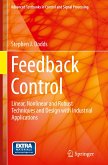Sliding-mode Control of PEM Fuel Cells demonstrates the application of higher-order sliding-mode control to PEMFC dynamics showing the advantages of sliding modes.
The book introduces the theory of fuel cells and sliding-mode control. It contextualises PEMFCs both in terms of their development and within the hydrogen economy and today's energy production situation as a whole. It then discusses fuel-cell operation principles, the mathematical background of high-order sliding-mode control and to a feasibility study for the use of sliding modes in the control of an automotive fuel stack.
Part II presents experimental results of sliding-mode-control application to laboratory fuel cells and deals with subsystem-based modelling, detailed design, and observability and controllability. Simulation results are contrasted with empirical data and performance, robustness and implementation issues are treated in depth. Possibilities for future research are also laid out.
The book introduces the theory of fuel cells and sliding-mode control. It contextualises PEMFCs both in terms of their development and within the hydrogen economy and today's energy production situation as a whole. It then discusses fuel-cell operation principles, the mathematical background of high-order sliding-mode control and to a feasibility study for the use of sliding modes in the control of an automotive fuel stack.
Part II presents experimental results of sliding-mode-control application to laboratory fuel cells and deals with subsystem-based modelling, detailed design, and observability and controllability. Simulation results are contrasted with empirical data and performance, robustness and implementation issues are treated in depth. Possibilities for future research are also laid out.









